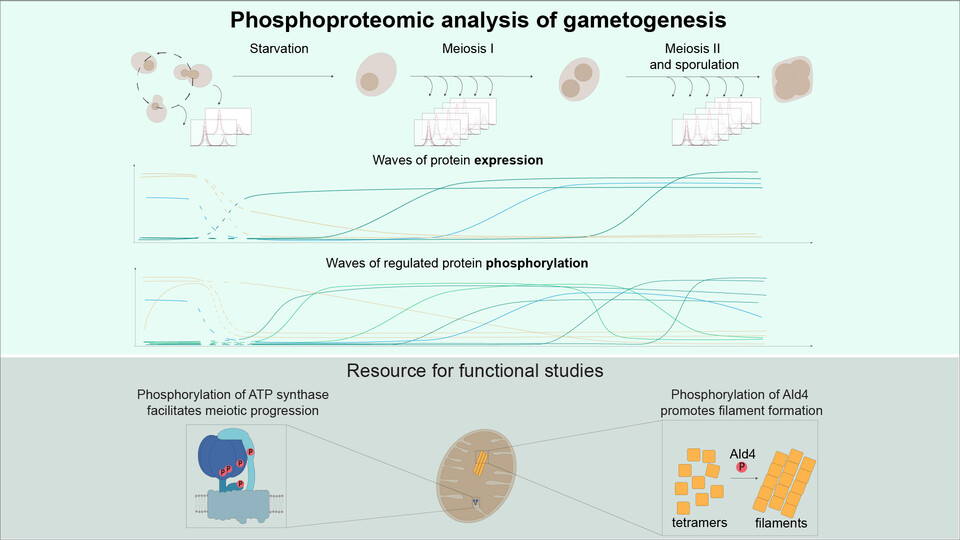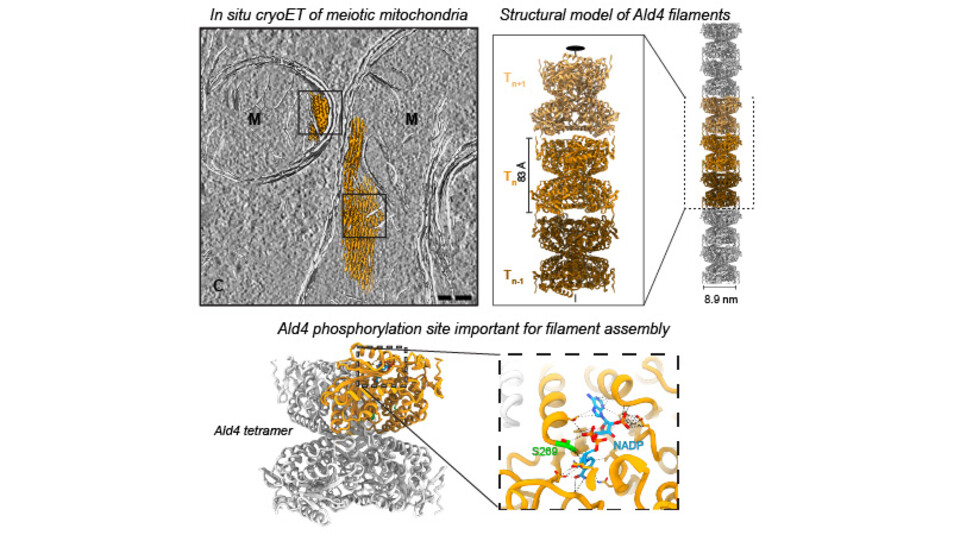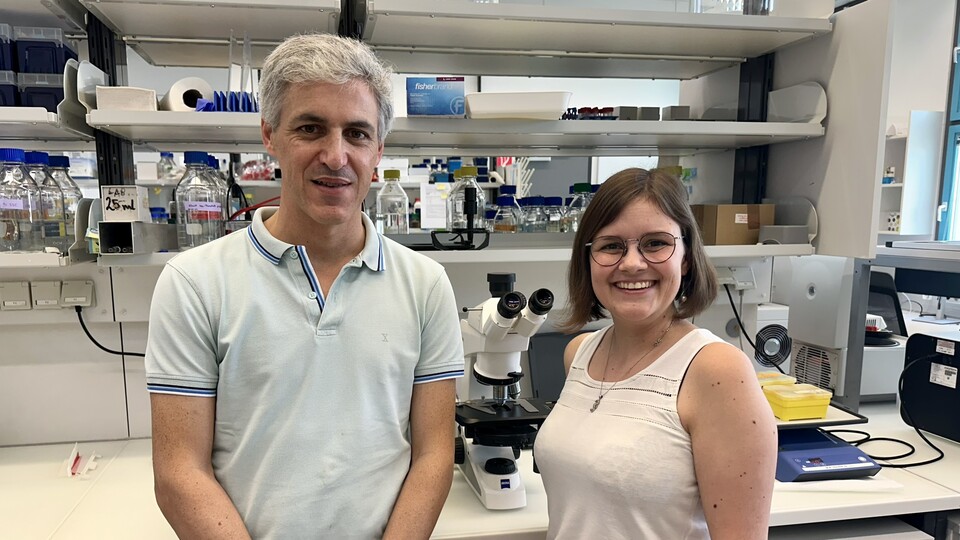


Compared to mitosis, meiosis is significantly more complex, generating gametes that are both haploid in DNA content and morphologically different from their progenitor cells. In their new study, Joao Matos and his team investigated the phosphorylation status of the proteome of budding yeast, Saccharomyces cerevisiae, during meiosis and spore formation. Joao and Rahel Wettstein, first author in the publication, explain: “We used phosphopeptide enrichment techniques coupled with quantitative mass spectrometry to map and understand the global changes that help cells differentiate. This is the first time the entire meiotic process has been investigated with this methodology.”
The Matos lab and their collaborators at the Eidgenössische Technische Hochschule (ETH) in Zurich and the European Bioinformatics Institute (EMBL-EBI) in Cambridge demonstrated that changes in phosphorylation are crucial for regulating meiosis. During different cellular stages, dozens of proteins undergo simultaneous modification. Joao elaborates: "Our data encompasses around 10,000 phosphorylation sites. By making this dataset open access, we hope it will aid the scientific community in generating hypotheses and answering more fundamental questions in meiotic research."
In mitochondria, which are crucial for many aspects of the meiotic program, enzyme regulation is vital during meiosis. For example, ATP synthase, which makes ATP from the proton motive force generated by the respiratory chain, undergoes significant changes. Joao explains, "We discovered that several ATP synthase subunits are phosphorylated in a coordinated manner at the onset of meiosis, a previously unknown aspect of ATP synthase regulation." The scientists found that these modifications do not impact mitochondrial respiration in mitotically dividing cells but are important for the successful completion of gametogenesis.
Aldehyde dehydrogenase 4 (Ald4), an enzyme crucial for breaking down acetaldehyde, a toxic intermediate in alcohol metabolism, also drew the researchers' attention. They discovered that mitochondrial Ald4 is phosphorylated during meiosis, leading to filament formation – a process not seen before. Joao explains, " In this work, we could link the phosphorylation of Ald4 to filament formation during meiosis. To study the composition and architecture of these filaments, we also developed 'FilamentID,' recently published in Cell."
Ald4 and its human homolog ALDH2 are future targets for the Matos group. “ALDH2 is mutated in 8% of the world’s population, causing intolerance to alcoholic beverages and known as the Asian Flush Syndrome”, Joao says. “In the future, we aim to determine the functional significance of these filaments in the context of human alcohol metabolism.”